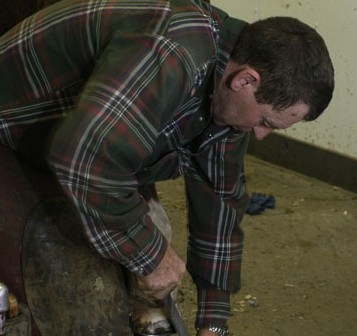
Earlier this month, we spent a day with shoer Dean Johanningmeier at the University of Wisconsin's Morrie Waud Equine Center. The farrier serves as the school's horseshoer at this clinic and the main campus animal hospital.
This "Shoeing For A Living" day will be featured in the January/February 2011 American Farriers Journal. Johanningmeier has developed a reputation in his more than 40 years of shoeing experience. Here's a potpourri of advice, targeted primarily at new users, he delivered throughout the day:
-
Johanningmeier says it has helped his career by staying open to new ideas and theories in shoeing. But trying to implement a new technique can be difficult. Be prepared to try, try again. Don't completely disregard it because the application failed on your first attempt. Johanningmeier says it takes several attempts to form a positive or negative opinion.
-
The Cross Plains, Wis., farrier frequently uses adhesives in his practice. He finds many young shoers are often intimidated by using adhesives. For him, if any shoers should be using adhesives, it is new shoers.
-
"Young farriers typically get the horses with bad feet," he says. "Using these products to glue on shoes or rebuild feet can make their lives easier."
-
When dealing with a lameness issue, Johanningmeier says communication is essential. It is the farrier's job to educate the owner on the plan and progress. His goal is to provide enough information, including his recommendations, and allows the client to make the decision.
-
This communication also benefits the shoer, as well. Often, horse owners may be impatient if they don't understand the direction of treatment. may think improvements that the horse is 100% sound. To build their patience, Johanningmeier often reminds horse owners that he often needs three to four shoeings to get the horse. "Too many people are looking for some magic to fix it in one shoeing," he says. "Improvement doesn't mean the horse is completely sound."
You can read more about the day with Johanningmeier in the January/February 2011 issue of American Farriers Journal.






